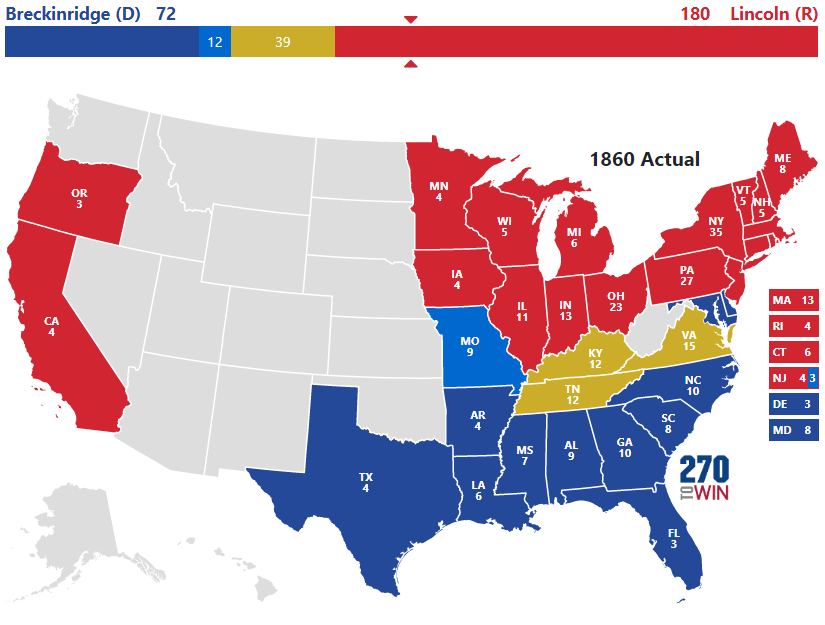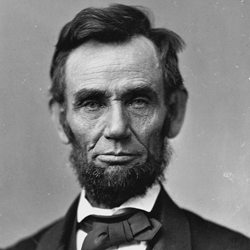1860 Presidential Election
The United States presidential election of 1860 set the stage for the American Civil War. The nation had been divided throughout most of the 1850s on questions of states' rights and slavery in the territories. In 1860, this issue finally came to a head, fracturing the formerly dominant Democratic Party into Southern and Northern factions and bringing Abraham Lincoln and the Republican Party to power without the support of a single Southern state.
Hardly more than a month following Lincoln's victory came declarations of secession by South Carolina and other states, which were rejected as illegal by the then-current President, James Buchanan and President-elect Abraham Lincoln.
Source: Wikipedia
1860 Election Results
| Candidate | Party | Electoral Votes | Popular Votes | ||
|---|---|---|---|---|---|
| ✓ | Abraham Lincoln | Republican | 180 | 1,866,452 | |
| John C. Breckinridge | Democratic | 72 | 847,953 | ||
| John Bell | Constitutional Union | 39 | 592,906 | ||
| Stephen A. Douglas | Democratic | 12 | 1,382,713 |

1860 Election Facts
- Welcome: Minnesota and Oregon become states during this election cycle
- Original 13 states control fewer than 50% of total Electoral Votes for first time
- Lincoln received only about 40% of the popular vote in a divided nation on the brink of Civil War
- New Jersey: Douglas won the popular vote on a Fusion slate comprised of 3 of his electors and 2 each for Breckinridge and Bell. Apparently - the history is a bit murky - some voters received a ballot with seven Douglas electors, taking votes from the Breckinridge/Bell electors. Bottom line - the 3 Douglas electors on the Fusion slate received the most votes, while the most votes for the four remaining spots went to Lincoln's electors.
- Issues of the Day: Slavery (Dred Scott decision, Secession)


